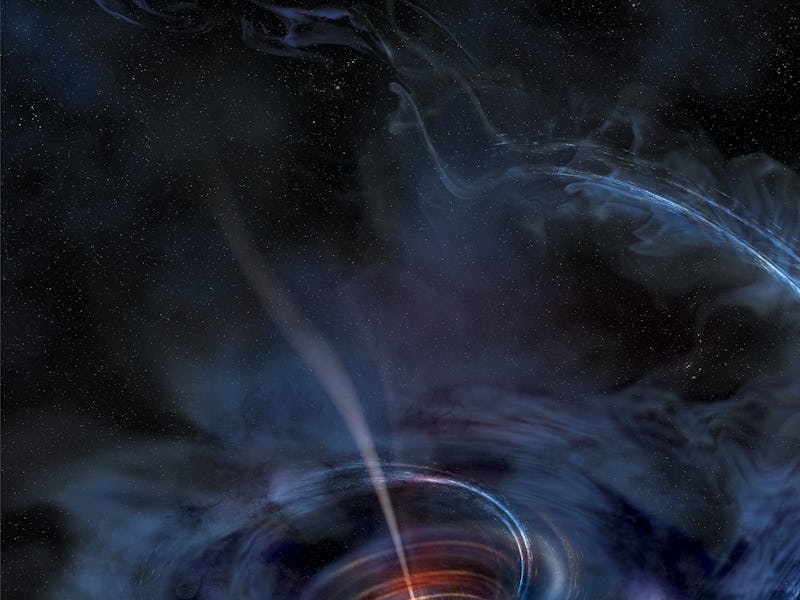We Have Proof That a Black Hole Will Choke on Stardust

At the center of a galaxy 300 million light-years away, a supermassive black hole rips apart a star. But it’s not fine dining for the black hole — it appears to be choking on the resulting stardust.
In a NASA-supported study published Wednesday in Astrophysical Journal Letters, American researchers studied the fluctuations of a tidal disruption flare, where a black hole tidally disrupts a star, tearing it apart and consuming the necrotic stellar material. The signs of choking actually appear to be the debris streams from the star colliding with each other before being swallowed by the black hole.
“The implications would be it’s really a first step in establishing what happens in tidal disruption flare,” Dheeraj Pasham, the paper’s first author and a postdoc in MIT’s Kavli Institute for Astrophysics and Space Research, tells Inverse. “Those can be used in bigger studies like trying to understand how supermassive black holes grow.”
Tidal disruption flares are a burst of electromagnetic activity when a black hole shreds a star migrating nearby. The flare that the research team analyzed was first found on November 11, 2014, and since then, telescopes have been monitoring it.
Using data from two telescopes, the team identified a pattern from the flare: when stardust fell into the black hole, there were small fluctuations in the optical and ultraviolet bands of the electromagnetic spectrum. This pattern repeated itself 32 days later in the X-ray band.
After analysis, scientists inferred that the stellar debris was colliding with itself on the outer perimeter of the black hole and producing bursts of optical and UV light. As the debris was pulled further in, it produced X-ray flares.
Going forward scientists plan to continue observing similar events in the future to map out a physical process of a tidal disruption event in real time.
“This is really just the first step,” Pasham says. “We need to discover more of these events. This particular event was very lucky in that large telescopes discovered it and monitored for a long time, so we need to have more of these events happens to find out what happens when a star is disrupted by a supermassive black hole.”